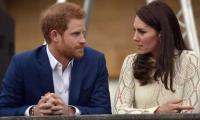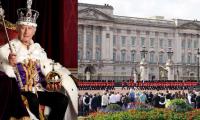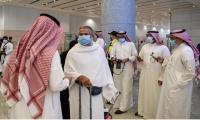Faced with the dilemma of siding with the House of Saud and keeping the Ayatollahs’ Iran unnerved, Pakistan is finding it hard to balance its act. Although Prime Minister’s Advisor on Foreign Affairs Sartaj Aziz did try to alleviate – while briefing an in-camera session of the National Assembly’s Foreign Affairs Committee – the strong apprehensions expressed by the opposition, serious concerns still linger due to a lack of transparency.
Pakistan is solidly committed to the safety and integrity of Saudi Arabia and its ruling House of Saud. And our current rulers and institutions remain quite loyal to their benefactors. Although Sartaj Aziz has ruled out any possibility of committing ground troops anywhere in the world, except for UN Peace Missions, the Sharif government has decided to join the Saudi-led 34-nation Sunni military alliance. This alliance is irrefutably against Iran and its expanding influence in the Middle East and elsewhere.
This militarist block is being presented as a front against terrorism – that is, against Islamic State (or Daesh), in particular.
The ideological and sectarian origins of Daesh are not entirely different from that of the House of Saud except for claims about who represents the Ummah under the suzerainty of Arabs; however unviable it may be in an extremely diverse Muslim World. Being the followers of Wahhabism, a variant of early Salafism, the House of Saud lays claims on the leadership of the Ummah by virtue of being the physical ‘protectors of the Harmain-Sharifain’ (the two holiest places at Makkah and Medina).
Daesh, also a follower of Salafism and rooted among the Sunni Arab tribes across vast swathes of Iraq and Syria, claims to have established an Islamic Caliphate in the image of the First Caliphate (632-661 C.E.) to counter the Saudi claim of the leadership of the Sunni Ummah. Ideologically, this is a contest between Saudi versus Daesh Shariah.
Even the origins of the House of Saud and Daesh, though different in historical context, have roots in the machinations of the imperialist powers in drawing and redrawing the maps of the Middle East. Trying to absorb the Ottoman Empire, the British carved out Saudi Arabia in 1932, and US President Franklin Roosevelt kept the House of Saud in power under a 1945 treaty. To date it remains a problematic tool in the hands of the successive US administrations.
In a marriage of convenience, both the Saudi clergy and the monarchy serve each other’s interests by promoting the Saudi version of Shariah and Wahhabism, which has been inspiring innumerable Sunni militant groups, some of which later took their own course, including Al-Qaeda and Daesh. Anti-Shia discourse, medieval corporal punishments and discrimination against women and minorities have been the hallmark of this process.
While they contend for power and ideological supremacy among the Sunni sections of Ummah, they forget that 85 percent of Muslims are of non-Arab origin and love to retain their ethno-lingual and cultural identities, unlike Al-Bakistanis who barter their national cultures for enrichment from remittances from the Gulf.
On the other hand, Daesh is the direct consequence of the US’ regime change policy in Iraq and Syria and the void created with the shattering of two Baathist authoritarian establishments. The Saudi and US-led allies’ flawed policy to back the Sunni Arab tribes and various extremist Sunni outfits against the Assad regime helped Daesh expand into Syria from Iraq where it emerged by playing on the alienation of Sunni Arab tribes enraged by the exclusionary Shia regime – both backed by Iran.
Led by Abu Bakr al-Baghdadi, Daesh is focused on Baghdad, once the capital of the Abbasid caliphate (750-1258 CE), Damascus, the capital of Umayyad caliphate (661-750 CE) and ultimately Medina, the capital of early caliphates led by the successors of the Prophet Mohammed (pbuh). Daesh and the Saudis are equally opposed to the Shias and to both the regimes in Damascus and Baghdad backed by Iran. However, Daesh threatens all Muslim nation-states, including the sheikhdoms, by raising the flag of Khilafa for the ‘whole’ Ummah, excluding Shias and other sects.
The Arab Spring led to the uprising in the oil-rich eastern Saudi Arabia and neighbouring Bahrain in 2011. Shia cleric Nimr al-Nimir, accused of fomenting trouble on Iran’s behest, was eventually executed. The rise of the Houthi-led upsurge in Yemen was also seen by the Saudis as an expansion of the Iranian influence on their borders – completing a full Shia crescent.
The conflict between the Iranians and the Arabs is very old and clearly defined on ethno-lingual and religious lines, even though it may seem like the continuation of the conflict between the Umayyads and Banu Hashim – both of Arab descent. The Saudis are desperate due to their failure to oust the Baathist Assad regime in Syria and the soon-to-be-lifted sanctions against Iran after the agreement of world nuclear powers over its nuclear programme.
The Islamic revolution led by Imam Khomeini fuelled the centuries-old Arab-Ajam conflict. Both Iran and Saudi Arabia got engaged in a protracted sectarian war to expand their influence. Populist Shiaism found followers across the Muslim world, the Middle East in particular. Soon – inspired and supported by the Iranian Pasdaran – radical, sectarian and militant militias emerged in Iraq, Lebanon and Yemen. The emergence of a majority Shia regime in Iraq further fuelled the fires of sectarian warfare. The Saudi-Iranian rivalry spread to almost all Muslim communities across diverse regions.
Pakistan, already reeling under sectarian divisions and terrorism, cannot afford to allow sectarian conflict and tussle for power between Saudi Arabia and Iran engulf its state and society. Siding with the 34-nation alliance, however limited it may be, in the name of fighting terrorism sends a very hostile message to our only neighbour – Iran – with whom we do not have a territorial dispute.
Rather than becoming partisan, Pakistan must follow in the footsteps of Zulfikar Ali Bhutto who brought Saudi Arabia and Iran together at the time of the creation of the Organization of Islamic Countries (OIC) in Lahore in 1974. Let’s go to the OIC to restrain Iran and Saudi Arabia from destabilising the Muslim World. Let’s not become a party to a mad conflict that can burn us and continues to destroy the Middle East.
The writer is a political analyst.
Email: imtiaz.safma@gmail.com
Twitter: @ImtiazAlamSAFMA
People stand in line up as election officials check their ballot papers during voting general election at a polling...
Women show their voter identity cards as they stand in a queue before casting their votes in Agartala. — PTIThe 18th...
Former prime minister Imran Khan. — Instagram/ imrankhan.ptiAn old saying has it that “when you dance with the...
Kashmiris in Indian illegally occupied Kashmir protesting against the Indian occupation as the forces of India looked...
A representational image showing residents walking at a wholesale market in Karachi. — AFP/FileOnce again there is...
A representational image showing late Pakistani human rights activist and Supreme Court lawyer Asma Jahangir. —...







